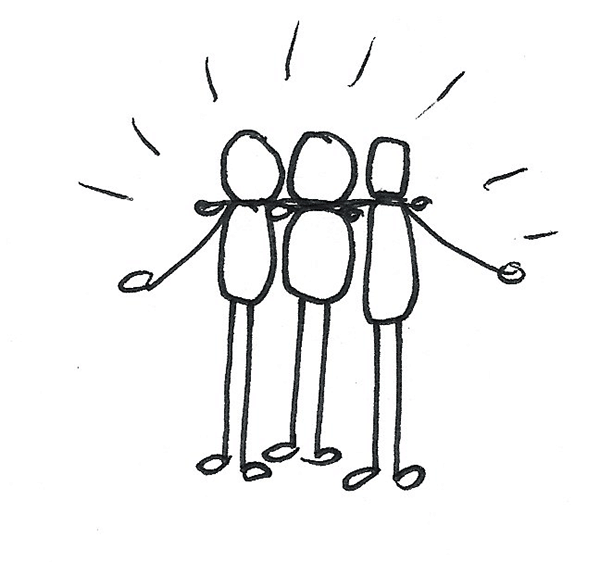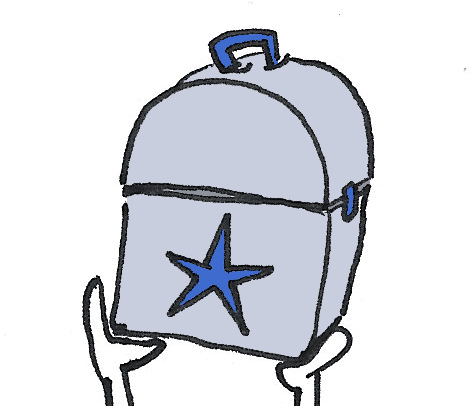
The COVID 19 Project tests the hypotheses that citizens, provided with information and tools can be trusted to address the complex problems in their community and nationally.
Get Involved
TAKE PART IN OUR EFFORT
Citizens and civil society organizations interested in supporting and joining the COVID 19 Project are welcome.
Join us for our online event at the occasion of the beginning of the Citizen Commission (Details to come)

Citizen Brief

What exactly do those two curves show?
Both curves add up the number of new cases over time. The more people reporting with the virus on a given day, the higher the curve; a high curve means the virus is spreading fast. A low curve shows that the virus is spreading slower — fewer people are diagnosed with the disease on any given day. Keeping the curve down — diminishing the rate at which new cases occur — prevents overtaxing the finite resources (represented by the dotted line) available to treat it.
Take Action

Get Personal

Get Social

Get Political
Flatten the Curve
Flatten the Curve as used to describe the challenge facing the global environment was informed by an understanding that the Coronavirus virulence and infectivity will eventually impact a significant percent of the global population. While it is spreading exponentially without public health informed measures to slow down the spread, the number of people who are exposed, become infected, become symptomatic, and experience the severe manifestation of the COVID 19 and require enhanced limited health care resources can overwhelm the system’s capacity. Part of the increase in mortality is due to the inability to get the most appropriate respiratory support. There is some evidence that with the COVID 19 outbreak spread over time, most susceptible individuals will contract the virus.
Goal:
The ideal goal in fighting an epidemic or pandemic is to completely halt the spread. But merely slowing it — mitigation — is critical. This reduces the number of cases that are active at any given time, which in turn gives doctors, hospitals, police, schools and vaccine-manufacturers time to prepare and respond, without becoming overwhelmed. Most hospitals can function with 10 percent reduction in staff, but not with half their people out at once.
The Challenge:
Some commentators have argued for getting the outbreak over with quickly. That is a recipe for panic, unnecessary suffering and death. Slowing and spreading out the tidal wave of cases will save lives. Flattening the curve keeps society going
-
Mitigation efforts like social distancing help reduce the disease caseload on any given date and can keep the healthcare system from becoming overwhelmed.
-
It is not clear whether the area under the two curves will be the same as the flattening occurs. This just highlights the impact on health care resources.
-
The gentler curve ultimately results in fewer people infected and fewer deaths. (Time to a vaccine, time to death from other causes.
Background:
The Coronavirus that causes COVID 19 is highly contagious and rarely lethal has reached Pandemic proportions. The challenges associated with containing the pandemic are complex but not overwhelming. The social challenge is meeting the "demand" on the healthcare system during a local surge of cases. A coordinated effort involving individuals, communities and requires a multi-prong approach based on evolving scientific knowledge.
Maintaining Distance
Staying Home (Self Quarantine)
Radical Hand Washing
No travel
Lifestyle activities
Public Information
Status Report
Take together the reduced spread through social distancing and the medical system being able to meet the COVID-19 need, and there is solid evidence that flattening the curve has worked.
Personal Non Medical Intervention

-
Maintaining Distance
-
Staying Home (Self Quarantine)
Radical Hand Washing
No travel
Lifestyle activities
Public Health Non Medical Intervention


Interim pre-pandemic planning guidance: community strategy for pandemic influenza mitigation in the United States—early, targeted, layered use of nonpharmaceutical interventions. Atlanta, GA: US Department of Health and Human Services, CDC; 2007.

Testing for COVID-19
Situational Intelligence
Needed Equipment
Coordination among local stakeholders
Contact tracing
Guidelines and Regulations
School, university, workplace, and public transportation closures; restrictions on public events; and limits on domestic and international travel.
Tests for COVID-19
International contact and border control
Situational Intelligence
Needed Equipment
Coordination
Resources
Flattening the Coronavirus Curve
One chart explains why slowing the spread of the infection is nearly as important as stopping it.
Mitigation efforts like social distancing help reduce the disease caseload on any given date, and can keep the healthcare system from becoming overwhelmed.
Why ‘flattening the curve’ may be the world’s best bet to slow the coronavirus
March 11, 2020
For many countries staring down fast-rising coronavirus case counts, the race is on to “flatten the curve.”
It is really time to get serious about #FlattenTheCurve. Time to plan seriously for life in a period of social distancing, avoiding crowds, movement restrictions.
Social Distancing 1: Public health, medical and emergency experts share the science on social distancing as well as strategies to support it, and explored how findings from past pandemics — as well as the current one — can shape responses today
CORONAVIRUS GOVERNMENT RESPONSE TRACKER
Blavatnik School of Government, University of Oxford, Radcliffe Observatory Quarter
Governments are taking a wide range of measures in response to the COVID-19 outbreak. This tool aims to track and compare policy responses around the world, rigorously and consistently.
Here’s the Biggest Thing to Worry About With Coronavirus
Rapid Expert Consultation on Social Distancing for the COVID-19 Pandemic (March 19, 2020)
Why outbreaks like coronavirus spread exponentially, and how to “flatten the curve”. Harry Stevens Washington Post March 14, 2020
Institute for Health Metrics and Evaluation (IHME) projected hospital resource use based on COVID-19 deaths.
The Counties and their forecasts
Contact tracing: As some states take steps to partially re-open their economies, public health officials and local governments are trying to aggressively ramp up contact tracing to track the spread of COVID-19 in their communities. (Axios)
Which lockdown policies actually slowed the spread of Covid-19?
The goal of flattening the curve was to prevent local health systems from becoming overwhelmed, which could have led to even higher fatalities than the US has already seen. Even New York City, the hardest-hit place in the country, has not seen its hospitals overrun in any kind of systemic way.
The Power of Hand-Washing to Prevent Coronavirus March 9, 2020
